quote:Most professional hitters have very little (if any) weight on their back foot at point of contact.
Most obvious with a swing like the young Hank Aaron had. Yet even the short striding “postural perfection”? of the great Mr. Pujols cannot repress rear foot elevation. Not difficult to understand why this happens during the swing…. perhaps a little tougher to see/understand why there is greater variation among throwers?
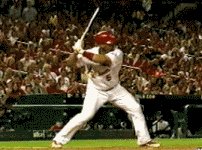
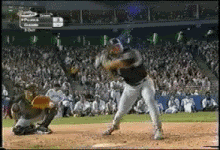
An important historical note: Throughout the great history of hurling there have been MANY prophets of drag, numerous kingdoms, and more than one emperor. The readers of this post have identified several throughout this thread but there are many more.
LA wrote
quote:Actually, (and I wish I had the references in front of me) there has been some pretty poor coaching in the other direction as well, "Don't drag your foot, son, it'll just slow you down". I'm pretty sure there have been some bizarre drills, maybe involving throwing with the post-foot up on a chair, to train pitchers to get that foot off the ground asap.
Indeed! There was a period when the consensus in many kingdoms appeared to be anti-drag. It was a very difficult time. Once discovered, many a drag felt ostracized, their careers got sidetracked, even ruined, and all because of something seemingly as insignificant as a line on the ground? Several tortuous devices were constructed to try and eliminate the dreadful drag.
quote:Drill #1 - Up & Out Foot Drill Objective - To help pitchers perfect the proper back leg action. The purpose of this drill is to stop foot drag and prevent over striding.
Equipment Needed - A brick, block or wood or other suitable object. The object will be placed at a location just in front of the pivot foot of the pitcher. The pitcher will be working out of the stretch. The pitcher should be reminded to roll and pick his back foot up so that it clears the object.
Procedure - The pitcher throws using his normal motion and delivery. If the pitcher fails to clear the object, then his back foot is "dragging" or he is over striding. Young pitchers should be coached to step out of the "hole" and up and over the block.
http://ezinearticles.com/?4-Ba...e-Players&id=1989046
Many remnants remain today although the intent may be a little different now.
http://www.5min.com/Video/Buck...or-Pitchers-23475254
Some more research reveals quite a range of opinions from the experts and quite a few appear to be anti-drag and fully equipped with drills and devices to enforce it. I have Dr. John Bagonzi’s book in front of me…”The Act Of Pitching” on pg 297 “BACK FOOT RELEASE DRILL …To keep the back foot from dragging on release”. You can imagine what the photos of the drill look like.
Coaching Pitchers…McFarland…Section on Back Leg
quote:“the back foot must not drag – it must leave the rubber immediately. Any time the back foot drags, it kills a lot of the forward momentum that has been built up, diminishing velocity.”
LA previously quoted one drag theorist:
quote:It doesn't matter what shape the dragline is, straight line, arc, zig-zag, etc....they're all fine. What does matter is that the dragline should end on a line middle-of-rubber to middle-of-homeplate.
Yet elsewhere we read by the same theorist:
quote:Measuring the progression of the posting foot from the rubber in distance and direction will tell you how sound a pitcher's mechanics are. Short or crooked draglines indicate bad posture, inappropriate weight shift, and/or premature rotation. The longer the back foot stays on the ground and the straighter his drag foot line, the better his mechanics.
http://www.pitchingperfect.com/files/Glass_Wall.htm
So…. is drag theory still evolving, has the research been completed, or are we joining the chase for another wild one of these?

Why shouldn't we be just a little skeptical given the entire history of drag? Working from the premise stated by LA earlier why not take a look at a few pitchers who do have draglines.
quote:what matters is where the post foot leaves the ground for the last time. That is the end of the dragline and it should be on a line middle-rubber to middle-HP.
A crooked/curved? dragline created by the “slap shot” rear leg reaction of Strasburg.
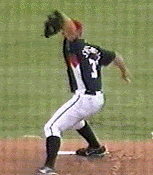
A clip of Wrong Side Sandy?
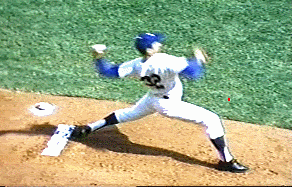
Good thing Brown retired when he did. Multiple release points leading to multiple draglines can now get you into trouble. Vertical line at approx far edge of rubber. Same hitter, same AB. Can't see dragline but can see the back foot reacting differently.
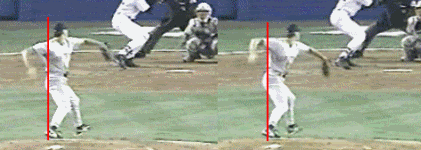
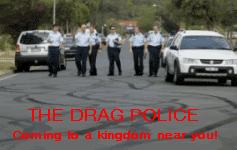
And for those who really love drag…. perhaps the longest line in history…the great Drag Master himself Hideo Nomo!!!
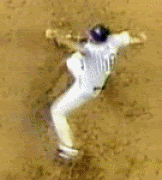
Could move over a little to his left to start though… don’t you think?
And so… in the absence of a deeper understanding of cause and effect, or the realization that exceptions sometimes teach us the most, the same old mindless pendulum of drag appears to just keep swinging from one side to the other.
Music please...
http://popup.lala.com/popup/432627086501351080
